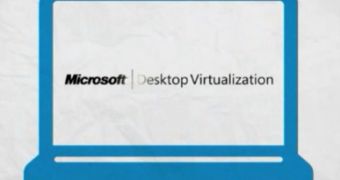A new whitepaper offered as a free download is designed to offer insight into the suite of desktop virtualization technologies from Microsoft, and what they can do in an enterprise environment.
The Microsoft Desktop Virtualization document is more of an overview of the technologies offered by the software giant to business customers, especially those working to adapt their organization’s operations as they embrace the consumerization of IT trend.
In the whitepaper, Microsoft focuses on a range of scenarios including user state virtualization, application virtualization, operating system virtualization, enterprise management and even VDI vs. RDS session virtualization.
“Microsoft Desktop Virtualization is a comprehensive suite of solutions that helps organizations give their employees the flexibility to work everywhere on a range of devices. It offers a consistent, secure, and personalized experience across locations and devices while helping to improve compliance through centralized control and secure access to confidential data,” the company said.
“Microsoft Desktop Virtualization solutions empower IT to simplify management by unifying IT operations onto a single and centralized infrastructure. It enables instant provisioning of corporate applications and desktops, which gets users up and running sooner, and it equips IT to provide access to legacy applications during the migration to Windows 7.”
As far as administration of virtualized assets goes, the software giant notes that customers are able to leverage the same System Center solutions they’re using to manage their physical environments.
The promise from Microsoft is that its Desktop Virtualization products were designed with enterprise security, compliance, cost control, etc. in mind, even in the context in which users work remotely and access the organization’s infrastructure from a range of devices.
“The challenge for IT is to provide users with a consistent experience that works across locations and devices while avoiding business disruptions and securing confidential corporate data. Because modern workers expect access to new capabilities in days or weeks instead of months, IT must provision users with those corporate resources quickly,” Microsoft added.

 14 DAY TRIAL //
14 DAY TRIAL //